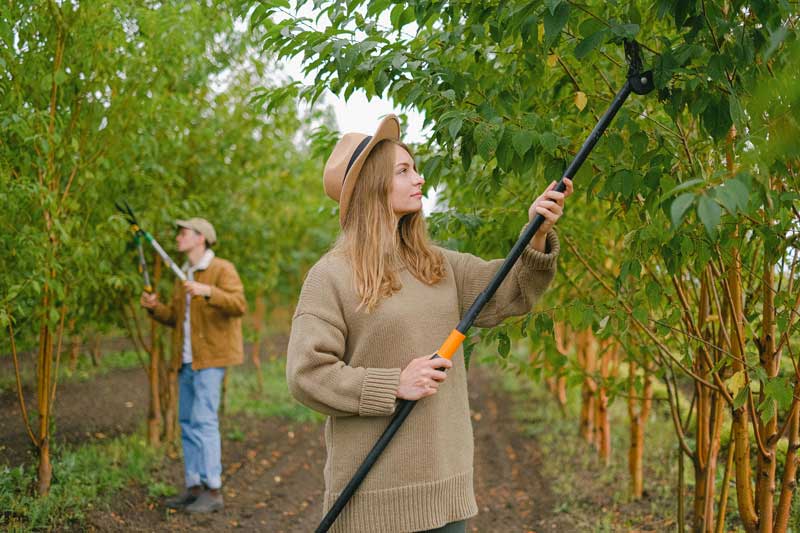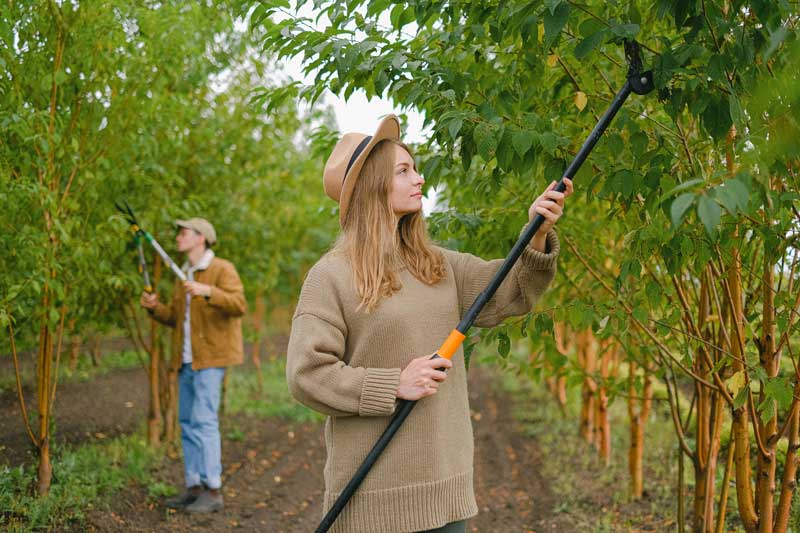Use the following chart to help jog your memory on when it is best to prune either a fruit tree or a bush. We will come back to this list periodically to add to it as we have updates. And after you have pruned, be ready for when blooms emerge as spring is an ideal time to fertilize once you see new growth.

Fruit Trees:
| Apple | Winter or early spring | Train tree for low head and prune moderately. Keep the center of the tree open with main branches well-spaced around the tree. Avoid sharp V-shaped crotches. |
| Cherry | Winter or early spring | Prune moderately, cut back slightly the most vigorous shoots. |
| Citrus | Spring after risk of freeze has passed, | Prune after risk of freeze has passed, but well in advance of summer heat. Water sprouts, a.k.a. “suckers”, emerge frequently, especially the first few years of the tree’s life. It’s best to remove suckers as they appear, otherwise, they take energy from the tree. The thorns also make harvest difficult. If the suckers do produce fruit, it is usually bitter and unpalatable. |
| Peach | Early spring before buds | Prune vigorously removing one-half of the previous year’s growth keeping the tree headed low and well thinned out. |
| Plum | Early spring | Remove dead and diseased branches, keep tree shaped up by cutting back rank growth. Prune moderately. |
| Quince | Early spring | Cut back young trees to form low, open head. Little pruning of older trees is required except to remove dead and weak growth and keep airflow. |
| Flowering Japanese Magnolia | Early spring | Before buds open, trim off side limbs that cross another limb. Keep center of tree open for airflow and birds will nest in it. |
Fruit Bushes, Flowering Bushes, and Vining Plants
| Blackberry | After bearing and summer | Remove at ground canes that bore last crop.In summer, but back new shoots 3.5′ high. |
| Boxwood | Early spring | Trim and shape before new growth occurs. |
| Blueberry | Winter while plants are dormant | Blueberries only grow on branches that are at least one year old, but the older the branch, the fewer the berries produced. You must prune the bushes so that they provide enough new growth for blueberry production the following year. |
| Raspberry | After bearing and summer | Remove at the ground in fall canes which bore last crop. In summer, head back new canes 20 ” to 22″ inches high. |
| Currant | Early spring | Remove old unfruitful growth and encourage new shoots. |
| Gardenia | Right after blooms have faded | Pruning your gardenia every other year typically keeps the size manageable. Gardenia blooms on new growth, so pruning after bloom cycle is ideal. |
| Gooseberry | Early spring | Same as currant—cut back shoots at 12″ inch and side shoots to two buds. |
| Grape | Late winter or early spring | Requires heavy pruning of old wood to encourage new bearing wood. Remove all old branches back to main vine. Cut back the previous year’s new growth to four buds. |
| Hydrangea | Early spring | Hills of Snow variety cut back to ground. Other varieties: remove dead and weak growth, cut old flowering stems back |
| Elderberry | After fruiting (Sept/Oct) | Prune severely. Remove one-half of season’s growth on established plants. |
| Roses, Tea, Hybrid, Perpetual | Early spring | Cut away all dead and weak growth and shorten all remaining branches or canes to four buds for weak growers and five buds for vigorous varieties. |
| Roses, Climbing | After flowering | Cut away all dead and weak growth and shorten all remaining branches or canes to four buds for weak growers and five buds for vigorous varieties. |

